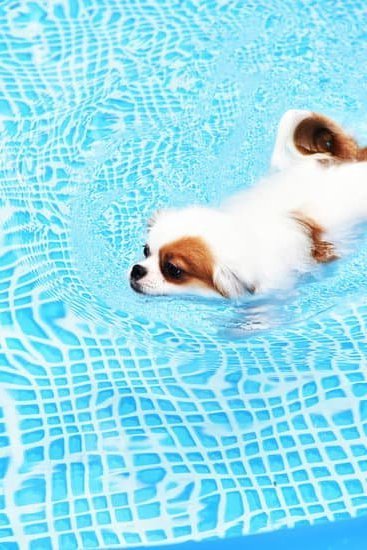Are you struggling to house train your dog? In this article, we will provide you with a comprehensive guide on how to house train a dog in just 5 days. House training a dog can be a challenging and frustrating task, but with the right approach and consistency, it is definitely achievable. By following our tips and guidelines, you’ll be able to successfully teach your furry friend where to do their business in no time.
House training a dog is an essential part of pet ownership, and it’s important to start as early as possible. Whether you have a new puppy or an older dog that needs some retraining, our step-by-step guide will help you understand the basics of house training and implement an effective routine. We’ll also discuss the use of positive reinforcement and provide tips for overcoming common challenges that may arise during the training process.
By the end of this article, you’ll have all the tools and knowledge you need to successfully house train your dog in just 5 days. From setting up a routine to addressing accidents and mistakes, we’ve got you covered. With patience, consistency, and dedication, you can celebrate your success and maintain good house training habits for years to come. Stay tuned for valuable insights and tips on how to achieve successful house training for your beloved canine companion.
Understanding the Basics of House Training
House training a dog is an essential aspect of being a responsible pet owner. It not only ensures a clean and odor-free home but also provides a sense of security and comfort for your furry friend. Understanding the basics of house training is crucial in successfully teaching your dog where and when to eliminate.
Using Crate Training
Crate training is an effective method for house training a dog in 5 days. This technique involves confining your dog to a crate or small, enclosed area when they are not under direct supervision. Dogs naturally avoid soiling their living space, so the crate can help them learn to hold their bladder and bowels until they are taken outside.
Establishing Feeding and Bathroom Schedule
Consistency is key in house training a dog, and establishing a regular feeding schedule can help regulate their bathroom habits. By feeding your dog at the same times each day, you can anticipate when they will need to relieve themselves. Take your dog outside immediately after meals, as well as first thing in the morning and last thing at night.
Recognizing Signs of Needing to Go
Understanding your dog’s body language is essential in house training. Look for signs such as pacing, sniffing the ground, circling, or suddenly stopping an activity to indicate that they need to go outside. By being attentive to these cues, you can proactively prevent accidents indoors and reinforce positive bathroom habits.
By employing these basic principles of house training, along with patience and consistency, you can effectively teach your dog how to house train a dog in 5 days.
Setting Up a Routine for House Training
When it comes to house training a dog in 5 days, setting up a routine is crucial. Dogs thrive on routine and by establishing a consistent schedule, you can effectively teach them where and when they should go to the bathroom. The key is to take your dog outside frequently, especially after they eat, drink, or wake up from a nap. This will help reduce the likelihood of accidents inside the house.
It’s important to keep in mind that puppies have smaller bladders and higher metabolisms, so they will need to go outside more often compared to adult dogs. A general rule of thumb is that a puppy can typically hold their bladder for as many hours as they are months old plus one. For example, a 2-month-old puppy should be taken out every 3 hours.
In addition to taking your dog outside consistently, it’s also essential to use the same door every time and take them to the same spot in your yard. This will help them associate that area with going potty. Over time, this routine will become ingrained in their behavior and make house training much more manageable.
| Frequency | Time Interval |
|---|---|
| Puppy | Every 2-3 hours |
| Adult Dog | Every 4-6 hours |
By following these simple steps and being consistent with your routine, you can significantly improve the success of house training your dog in just five days. Remember, patience and persistence are key when it comes to this process, but by setting up a solid routine for your furry friend, you’ll be well on your way to successful house training.
Using Positive Reinforcement for House Training
House training a dog can be a challenge, but using positive reinforcement can make the process more effective and enjoyable for both you and your furry friend. Positive reinforcement involves rewarding good behavior with treats, praise, or toys, which encourages your dog to repeat that behavior in the future. Here are some tips on how to use positive reinforcement for house training your dog:
1. Use treats: When your dog successfully goes potty outside or in their designated spot indoors, immediately reward them with a small treat. This will create a positive association with going potty in the right place.
2. Use praise: In addition to treats, use verbal praise and petting to reinforce good behavior. Dogs thrive on attention and affection from their owners, so giving them lots of love when they do the right thing will motivate them to continue doing so.
3. Use playtime: Another form of positive reinforcement is incorporating playtime as a reward for successful house training. After your dog goes potty in the right spot, engage in a short play session with their favorite toy as a way of reinforcing their good behavior.
By consistently using positive reinforcement techniques, you can effectively house train your dog in just 5 days. Remember to be patient and consistent with these methods, and soon enough, your furry companion will understand where they should go potty.
Remember that every dog is different, so be sure to adjust your training methods based on your individual dog’s personality and needs. By providing positive reinforcement and support throughout the process, you can help your dog successfully learn where to go potty in just 5 days.
Common Challenges and How to Overcome Them
House training a dog in 5 days can be a challenging task, and it is important to anticipate common challenges that may arise during the process. By being prepared and knowing how to overcome these challenges, you can make the house training experience smoother for both you and your furry friend.
Patience Is Key
One of the most common challenges during house training is staying patient. It can be frustrating when your dog has accidents inside the house, especially after you have been diligently working on their training. It’s important to remember that house training takes time, and every dog learns at their own pace. Being patient and understanding will help both you and your dog stay calm throughout the process.
Consistency Is Essential
Another challenge many dog owners face is maintaining consistency. This includes not only sticking to a regular feeding schedule but also being consistent with taking your dog outside for bathroom breaks. Inconsistency can confuse your dog and hinder their progress in learning where they should go potty. By establishing a routine and sticking to it, you can help your dog understand what is expected of them when it comes to toileting habits.
Managing Setbacks
It’s important to acknowledge that setbacks are normal during the house training process. Even with the best efforts, accidents may still occur, especially in the first few days of training. The key is not to get discouraged by these setbacks but rather learn from them.
Understand why the accident happened – whether it was due to a change in routine or perhaps miscommunication – and adjust your approach accordingly. Remember that setbacks do not mean failure, but rather an opportunity for growth and improvement.
By addressing these common challenges with patience, consistency, and resilience, you can successfully navigate through the house training process within 5 days while fostering a positive relationship with your beloved pet.
Tips for Successful House Training in 5 Days
House training a dog can be a challenging task, but it is definitely achievable with the right techniques and consistency. If you are wondering how to house train a dog in 5 days, it’s important to understand that each dog is unique and may have different learning curves. However, by implementing the following tips, you can increase the likelihood of successfully house training your dog in a short amount of time.
First, it’s crucial to establish a consistent routine for your dog. This includes regular feeding times, potty breaks, and walks. By following a predictable schedule, your dog will begin to understand when they are expected to go outside to do their business.
In addition to setting up a routine, using positive reinforcement is essential for successful house training. Every time your dog eliminates outside, be sure to praise and reward them with treats or verbal praise. This will help them associate going potty outside with positive experiences.
Another helpful tip for successful house training in 5 days is to closely monitor your dog’s behavior and provide ample opportunities for them to go outside. Keep a close eye on signs that they may need to go potty, such as sniffing the ground or circling in place. By proactively taking them outside during these times, you can prevent accidents indoors and reinforce the desired behavior of eliminating outside.
| House Training Tips | Description |
|---|---|
| Establish a Routine | Create a consistent schedule for feeding, potty breaks, and walks. |
| Use Positive Reinforcement | Praise and reward your dog every time they eliminate outside. |
| Monitor Behavior Closely | Keep an eye out for signs that your dog needs to go potty and take them outside proactively. |
Addressing Accidents and Mistakes
Accidents happen, and this is especially true when house training a dog. It’s important to remain patient and understanding when accidents occur, as scolding or punishing the dog will not help with the house training process. Instead, it’s essential to address the accidents in a positive and constructive manner.
Here are some tips on addressing accidents and mistakes while house training your dog:
- Stay calm: When you discover an accident, stay calm and avoid getting upset with your dog. Reacting negatively can create anxiety for your pet and hinder the house training process.
- Clean thoroughly: It’s crucial to clean up accidents thoroughly to eliminate any lingering odors that may prompt your dog to repeat the behavior. Use a pet-safe cleaner specifically designed for removing pet odors.
- Redirect behavior: If you catch your dog in the act of having an accident, interrupt them without causing a fright. Immediately take them outside to their designated potty area and praise them if they finish there.
- Adjust routine if needed: Accidents may indicate that your current routine or schedule needs adjustments. Monitor your dog’s behavior and consider taking them out more frequently or at different times.
By addressing accidents and mistakes in a positive way, you can help reinforce good potty habits for your dog as part of their house training process. Remember, patience and consistency are key when it comes to successful house training.
Celebrating Successes is also an integral part of House Training; reinforcing positive behavior encourages dogs to continue these actions instead of negative or unintended ones. Successful methods can streamline.
Celebrating Success and Maintaining House Training Habits
After successfully house training your dog in just 5 days, it is important to continue the positive reinforcement and routine that has been established. Celebrating the success of achieving this goal with your furry friend is a great way to strengthen the bond between you and your pet. Positive reinforcement, such as giving treats or praise when your dog successfully goes outside, will help to maintain the house training habits that have been developed.
Once the initial 5 days of intensive training have passed, it is crucial to remain consistent with the established routine. This means continuing to take your dog outside at regular intervals, providing positive reinforcement for desired behaviors, and monitoring for any signs of needing to go outside. Consistency is key in maintaining the successful house training achieved in such a short timeframe.
While celebrating success and maintaining house training habits is important, it is also essential to be patient and understanding when accidents occur. Accidents are a normal part of the learning process for dogs, so it is important not to get discouraged or punish your pet for these mishaps.
Instead, continue using positive reinforcement and consistency to reinforce the desired behavior of going outside. Remember that every dog learns at their own pace, so patience and understanding are vital in this process.
Frequently Asked Questions
How Quickly Can a Dog Be House Trained?
The speed at which a dog can be house trained depends on the individual dog, its age, breed, and previous training. Some dogs may learn in just a few weeks, while others may take several months to fully grasp the concept.
Is It Possible to Potty Train a Dog in a Week?
Potty training a dog in just one week is quite challenging and not always realistic. While some progress can be made in that time frame, complete house training usually takes longer due to the need for consistency, patience, and positive reinforcement.
How Do You Stop a Dog From Peeing and Pooping in the House?
To prevent a dog from peeing and pooping in the house, it’s important to establish a routine for potty breaks, supervise the dog closely indoors, use positive reinforcement for going outside, clean up accidents promptly with an enzymatic cleaner, and consider crate training or using baby gates to limit access to certain areas of the home.
Consistency is key when teaching a dog where it’s appropriate to relieve itself.

Welcome to the blog! I am a professional dog trainer and have been working with dogs for many years. In this blog, I will be discussing various topics related to dog training, including tips, tricks, and advice. I hope you find this information helpful and informative. Thanks for reading!





